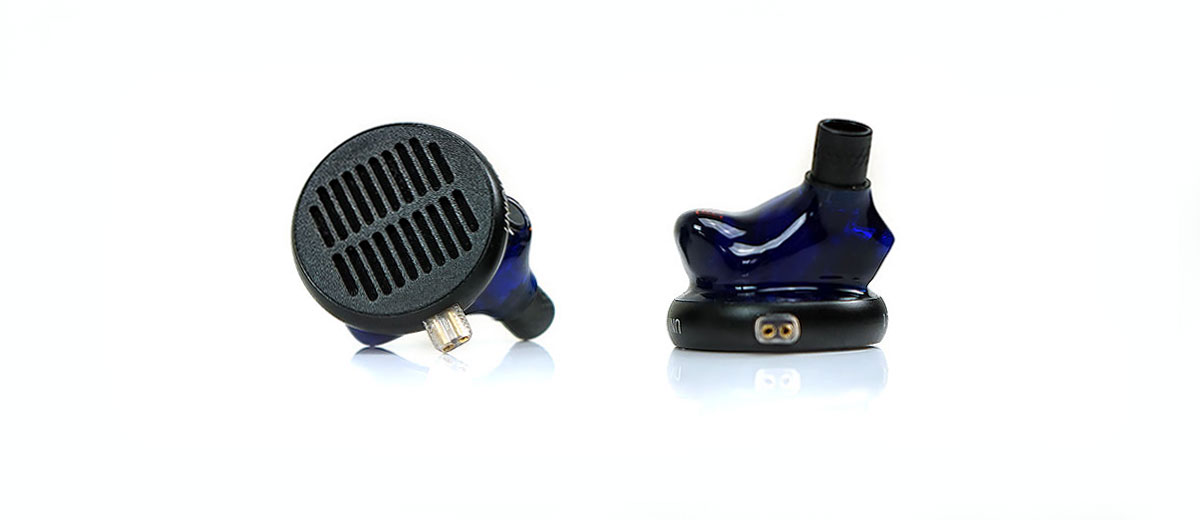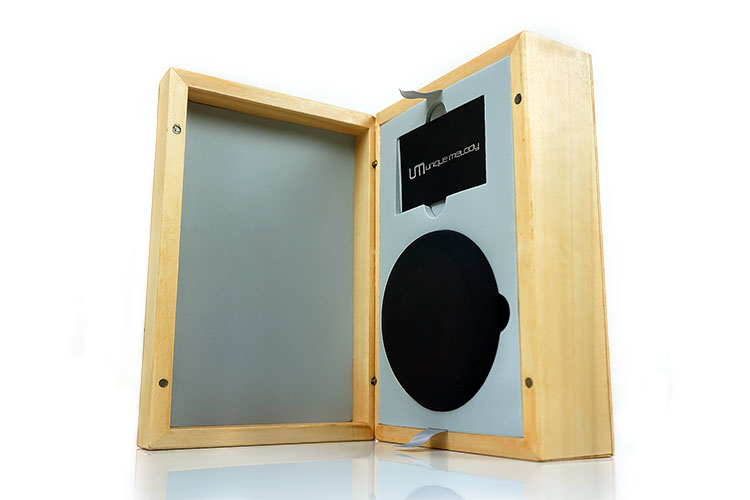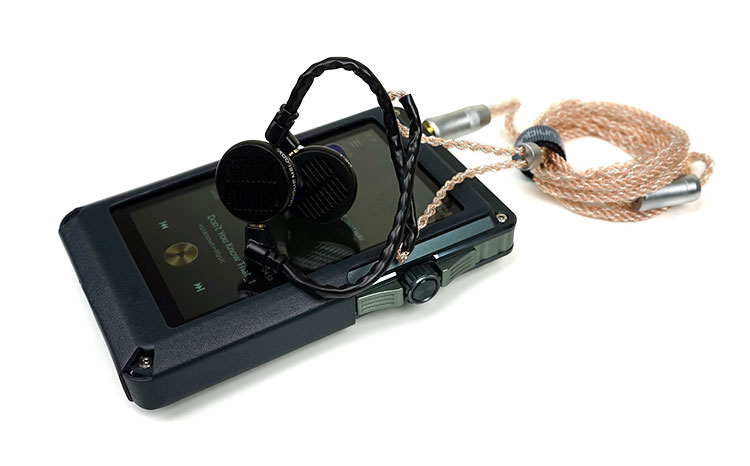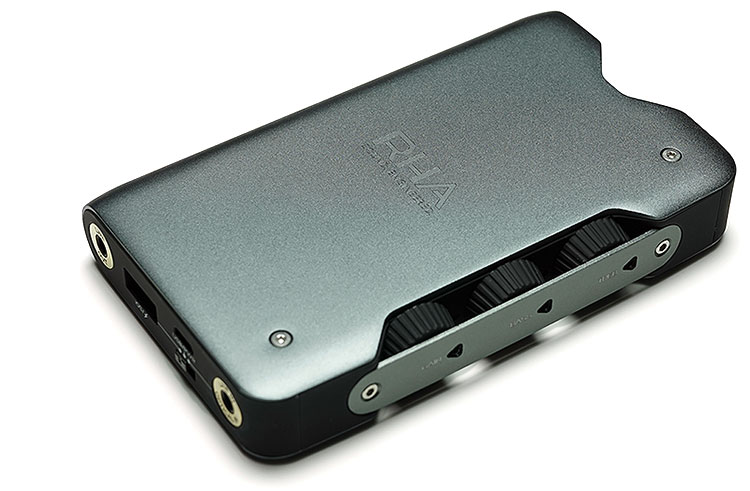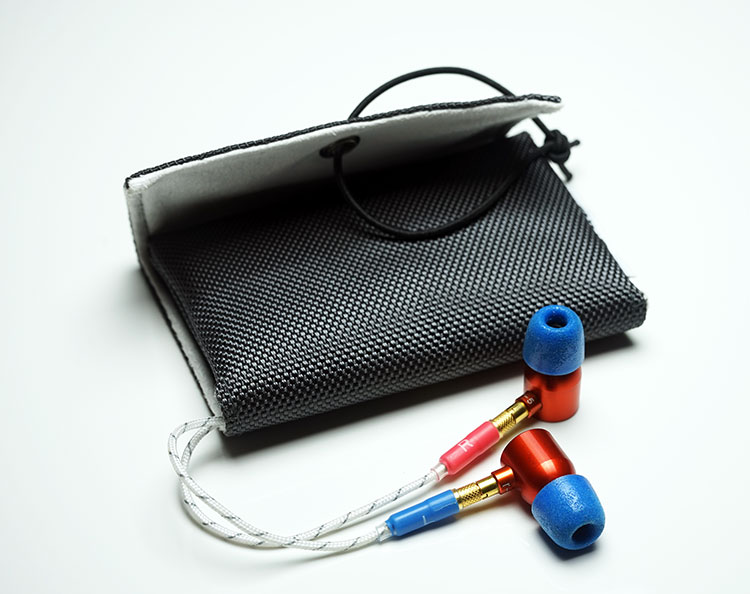Matchability
Unique Melody ME.1 Efficiency
The ME.1 is rated at 23.1 ohms and 109dB which is reasonably efficient, especially for a planar type design but rarely do I find planar specs to tell the full story, and in the case of the ME.1 both source and power can play a role in the final performance.
Voltage wise I have no issues with most sources and amps, but I do find the ME.1 can scale much better with amping than regular BA or hybrid designs. I found the gap between quiet and too loud to be much bigger than regular IEM’s, in some cases 10-20 steps more.
Yes, you can plug this into a decent smartphone and get a reasonable sound. For instance, my own LG G6 with its quad-DAC setup sounds ok actually and has no issues with volume but it all comes across as a little polite for me.
True enough, the LG G6 has a little less low-end emphasis compared to the older V20 and it suddenly doesn’t become lean sounding but it could do with a setup with better output power to really drive the low end properly.
Noise
The ME.1 is an excellent performer for noise with pretty much all DAP’s tested delivering a clean black background with next to no noise or background hiss. DAPs with known higher noise floors such as the i5 and X5iii were pretty quiet.
Portable or transportable amps such as the Hugo 2 and the ALO RX were also very well controlled. Even the ALO Audio V5 tube amp had excellent low noise levels, perceptible hiss only started creeping in once volume levels went up to a very high level.
Scaling
Summary
I say the ME.1 is not as power-hungry as the Vega or Flares Pro. Also, they can get louder faster than either of these two. However, source matching, be it an amp of DAP, did bring some tonal variations with the ME.1. Generally, I found the better quality of amping output the cleaner and more controlled the ME.1 sounded.
Out of the DAPs tested the Cayin i5 was the most aggressive and impactful but not the most resolving. It did nicely dovetail the fun signature of the ME.1 so EDM and RnB sounded very engaging with this pairing.
Current mode amping such as the Bakoon HPA-01M would be my pick of amps in terms of speed and impact though I found the ME.1 didn’t need that level of power, well not as much as full-scale planar headphones.
The Hugo 2 was my pairing pick for detail, staging, and separation with the ME.1 though as with the Bakoon the power requirements from the Hugo 2 were not that substantial.
Select Pairings
FiiO X5iii
Low gain – volume 30 – 70, no noise
The X5iii delivered a thicker sound than the higher-end DAPs such as the X7ii and Opus#2. Certainly a fuller low-end but it did not feel as agile with the ME.1 as the X7ii and delivered a slightly harder sounding upper mid to lower treble response that played a little on the ME.1’s lower treble energy. It is not overly harsh just not as pure and refined sounding as I would like it to be.
FiiO X7ii
Low gain – volume 30 – 75, no noise
This pairing was very clean with a ‘bigger sound’ than the X5iii using the AM3. It also had a more refined top end and excellent low-end definition. Unlike the X5iii this pairing has a far smoother lower treble performance but still with plenty of energy and articulation. Sub-bass definition and power are excellent and distortion-free creating great depth and power.
I think the X7 Mark 2 also does a little bit more with the treble presence of the ME.1 over the DX200 but that a double-edged sword as it’s not quite as smooth and natural as the DX200 but the additional energy can sound more exciting with the ME.1
Opus#2
Low gain – volume 55 – 95, no noise
This is an open and engaging presentation delivering a very smooth and detailed sound from the ME.1. It doesn’t quite have the low-end heft and power of the X7ii AM3a combination preferring a more linear low-end performance but sub-bass detail and definition is very good. It is not lacking in that dept.
This pairing really excels in staging with tremendous width and air on the ME.1. Instrumental separation is excellent. Vocals are organic and very natural sounding with Opus#2 and the ME.1. One of the smoothest pairings I have heard to date.
iBasso DX200
Low gain – volume 70 – 105 no noise
Quite similar in general presentation to the X7ii with the AM3a though in general, I find the DX200 to have a slightly fuller sound with the ME.1 and more mid-bass body weight when paired with the ME. 1
Sub-bass was not quite as powerful as the X7 Mark 2/AM3a combo using the AMP 1 card but with AMP 2 and 3 cards, it had a bit more substance. Overall a slightly softer and smoother response from the ME.1 using the Amp 1 card unbalanced.
Cayin i5
Low gain – volume 20 – 32, no noise
This is a punchy sounding pairing with a bit more dynamic low-end impact and less neutral sounding than the X7ii and DX200 combinations.
The top-end performance is well controlled, clean, and clear without any harsh peaks and focuses well on that forward vocal signature of the ME.1. I do not find this pairing as resolving as the ES9028PRO DAPs but it does nicely complement with the musical signature of the ME.1
Bakoon HPA-01M
Low gain – 30-40% on the analog pot, no noise
This is a noise-free pairing but not as power-hungry as some full-scale planar headphones so you do not have to turn the dial up that far in low gain. There is some noticeable channel imbalance on low volume but this is entirely normal for the HPA-01M on efficient planars and generally all IEMs.
This pairing has a tighter low end than the DAPs and also a smoother treble response. The general presentation was clean with well-separated instrumental passages and a natural but full-bodied timbre.
The flatter current mode output also kept the low-end from blooming nicely as well as preventing any sharpness in the upper mids and lower treble. Sub-bass depth and presence are both powerful and well defined.
I do prefer the ME.1 with the Bakoon amp stage, it seems to enjoy the additional power over running out of pure sources with excellent dynamics and a touch more speed.
Chord Hugo 2
Volume lighter red max – plenty of power to drive the ME.1, No noise
The Hugo 2/ME.1 delivers a lovely black background with a very tight low end, plenty of detail, and excellent separation. However, this presentation does differ from the Bakoon pairing in a number of ways.
The Bakoon teases out a much superior low-end in terms of power and impact whereas the Chord tends to sound a bit more neutral with the ME.1 focusing instead on quicker transients, better imaging, and a bigger soundstage. Treble is also a bit more prominent on the Hugo 2 compared to the Bakoon/ME.1 pairing.
RHA L1
Low Gain Volume – 1.8 – 2 using line-in, no noise
This was a clean but punchy and energetic pairing with a bit more body in the ME.1 than the Hugo 2 and the Bakoon. It was perhaps my favorite pairing if I wanted to inject some serious impact in the ME.1 low end.
The dynamics with this match-up were excellent and certainly more aggressive sounding than the DAP only combinations.
Treble was a little harsher sounding than both the Hugo and the Bakoon with the ME.1 though not overly bright, just a little too metallic sounding for my liking which tended to draw my focus in a bit more.
Select Comparisons
Audeze iSINE 10
$399
Technical
Both are full-range planar IEMs, the first of their kind in all honesty but boy they look incredibly different. The iSINE 10 draws more from a headphone background with its larger 30mm driver compared to the 18.5mm ME.1 and it is much bigger as a result. However, both weigh relatively similar which is a testimony to how thin those magnets are in the iSINE series.
Both are quite comfortable in the ear with the iSINE 10 perhaps the slightly lighter of the two but isolates much less than the ME.1. The ME.1 has a deeper insert and a wider range of tips that help with both comfort and seal. The use of traditional wiring on the ME.1 also is more comfortable than the iSINE 10 hooks.
The iSINE Cipher cable is a major difference technically to the ME.1. But, of course, limited purely to iGadgets. Thankfully you can buy with both analog and Cipher cable but they do sound a bit better with the Cipher using iGadgets but proper amps using the analog cable scale better.
Sound
The iSINE 10 is the marginally harder of the two to drive but just by 1-2 digital steps (Opus#2). Both are good noise performers and both excel on the Bakoon current mode HPA-01M.
Bass
Tonally the ME.1 is the weightier of the two with a more planted and powerful sub-bass performance, warmer mid-bass, and generally a thicker note, particularly in its instrumental timbre which is a little more solid sounding. The iSINE 10 is more linear in its low-end with a bit more mids-focus and a slightly lighter airier tonality. Though it reaches pretty low with good definition it doesn’t rumble as hard as the ME.1.
Mids
The iSINE is a little more balanced in the mids, perhaps a bit more neutral sounding than the ME.1. Instrumental work is a little leaner and quicker paced on the iSINE10 though generally speaking it is quite a natural sounding timbre. The ME.1 lower mids sit a little further back than the iSINE with vocals further forward and fuller sounding. In comparison, the vocals on the iSINE 10 are a bit more mixed with a slightly cleaner edge but slightly harder sounding with the odd moment of sibilance creeping in.
Treble
Upper mids to lower treble on the iSINE 10 also has a boost of energy much like the ME.1 but I find the ME.1 to be smoother sounding, less brittle and not as hard sounding as the iSINE 10 which seemed to lack a little in body and throwing out some sharp overtones on percussion passages with the analog cable. The ME.1, in contrast, has more lower-treble body and a slightly smoother sound but it is not as airy in the final octave with that post 7k dip taking a little sparkle out of the final octave.
Soundstage
Staging wise both sound really open and spacious with an out of head feel more reminiscent of a good open headphone, however, the ME.1 is the more forward of the two with the iSINE 10 sitting just a little but further back. The ME.1’s elevated bass and vocal presence just pulls in those aspects with a bit more focus creating a slightly more dynamic sounding staging quality.
oBravo ERIB-5a
£319.00 (Incl. VAT)
Technical
The ERIB-5a has been out on the market much longer than the ME.1 or iSINE 10, however, it is not a full range planar. Rather it is a traditional bullet design hybrid dynamic driver with a planar tweeter IEM though like those two it is an open design.
It is also much lighter than the ME.1 and a fair degree more comfortable in the ear but tip choice is more restrictive. The ERIB-5A only sounds good with foam tips, the silicone tips are way too bright and thin sounding.
The ERIB-5a is rated at 16 ohms so volume is not a huge issue however its efficiency is just 102dB making it the least efficient of the compared IEMs. What that means is that it needs a hell of a lot more power than the ME.1. In fact, in my review last year I only found a satisfying pairing with a desktop tube amp rather than regular DAPs and portable amps. Despite it being excellent with regards to noise control it is not an IEM that is happy being jacked out of a smartphone.
Sound
The ERIB-5a is a mid-centric presentation with a lot less low-end weight and power than the ME.1 and as such it sounds a lot more compressed, particularly if you do not feed it enough power. It loses a lot in the way of dynamics and expansiveness, sounding relatively “small” and leaner in its timbre in comparison to the ME.1’s much more open and dynamic performance.
Pairing with these IEMs couldn’t be more of a contrasting experience. Even with the Bakoon, I felt the ERIB-5a has a distinct veil over its vocal performance compared to the livelier and clearer sounding ME.1. The RHA L1 performance was much worse with a very uneven sound like it was almost coming from next door.
It was only with the Cypher Labs Sustain84 did I get a proper performance from the ERIB-5a with a much more natural and dynamic sound. The ME.1 does not need that much power and it sounds a lot more convincing on a wider range of sources and amps than oBravo’s hybrid.
Baby Stax II
$490
Technical
The Stax SR002 or better known as the Baby Stax II an electrostatic in-ear and relatively cheap one at that compared with Shure’s KSE1500. Its shape and fit is more line with the iSINE series but nowhere near as comfortable and light-years away from the comfort and seal of the ME.1. I always struggled with the fit of the Stax portable unit finding it fairly uncomfortable, time has not changed that opinion.
The SR002 comes with its own tiny transformer amp so it’s hard to compare either in terms of efficiency but you do have to use the amp whereas the ME.1 does not need a dedicated external amp for power.
Sound
Two different signatures with the SR002 sounding very mid-centric lacking in depth and height and have much less body in its note compared to the ME.1 It is a good deal faster though with superior imaging and articulation but its low-end lacks both weight and power leaving everything a bit too light in sound despite its warmth. Much like the iSINE 10 comparison its a question of power over speed.
The same pattern for the mids with the Stax favoring a clean and detailed presentation with very precise control and imaging over the ME.1’s richer timbre, better fundamentals, and sheer musicality. The Stax has a cleaner lower treble with the upper mids and lower treble to be just a bit more refined than the ME.1.
For genre matching, I would take the Stax more for audiophile recordings and the ME.1 for modern rock, metal, and EDM.
Our Verdict
I am really glad that more and more companies are working on planar technology within the IEM industry because the recent efforts combined with an open design makes listening an absolute pleasure.
The ME.1 should not be considered another “me too” product though. Yes, it evokes an LCD type imagery but it is well-designed, reasonably comfortable and with just enough efficiency to sound good on most devices. The secret though is in the amping to make this planar IEM really sing. Not just pure power, but quality resolving power. Once you sort out your power this is a very open, spacious but powerful sounding IEM, with a fun sounding presentation that matches really well with classic power metal, R’n’B, and EDM.
I have to remark, and perhaps I didn’t emphasize it enough during the review that my ears never felt pounded on or tired from listening to the ME.1 despite its full-bodied nature. Credit to Unique Melody on the acoustic filter implementation for that end result.
What could be improved? I would like to hear the custom version obviously just to nail that comfort level and seal. The supplied silicone single bore tips are a bit loose for me and the lack of a lip on the nozzle makes it all a bit ‘slippy slidey’. Stronger stem variants such as Symbio sound superior and hold their grip better.
All this for $769 though is actually very good value in my books. It is certainly a head-turner and a very interesting IEM physically but thankfully it also has a very engaging sound that I quite enjoy.
ME.1 Technical Specifications
- Impedance: 23.1 Ω
- Diaphragm Diameter: 18.5 mm
- Magnet Type: Dual-Layer High Strength Neodymium
- Shell: 3D Printed Medical Grade Acrylic with CNC Finish
- Connector Type: 2-Pin Protruding Connector
- Cable: 6N Single Crystal Copper
- Cable Termination: 3.5 mm Headphone Jack




